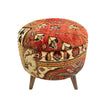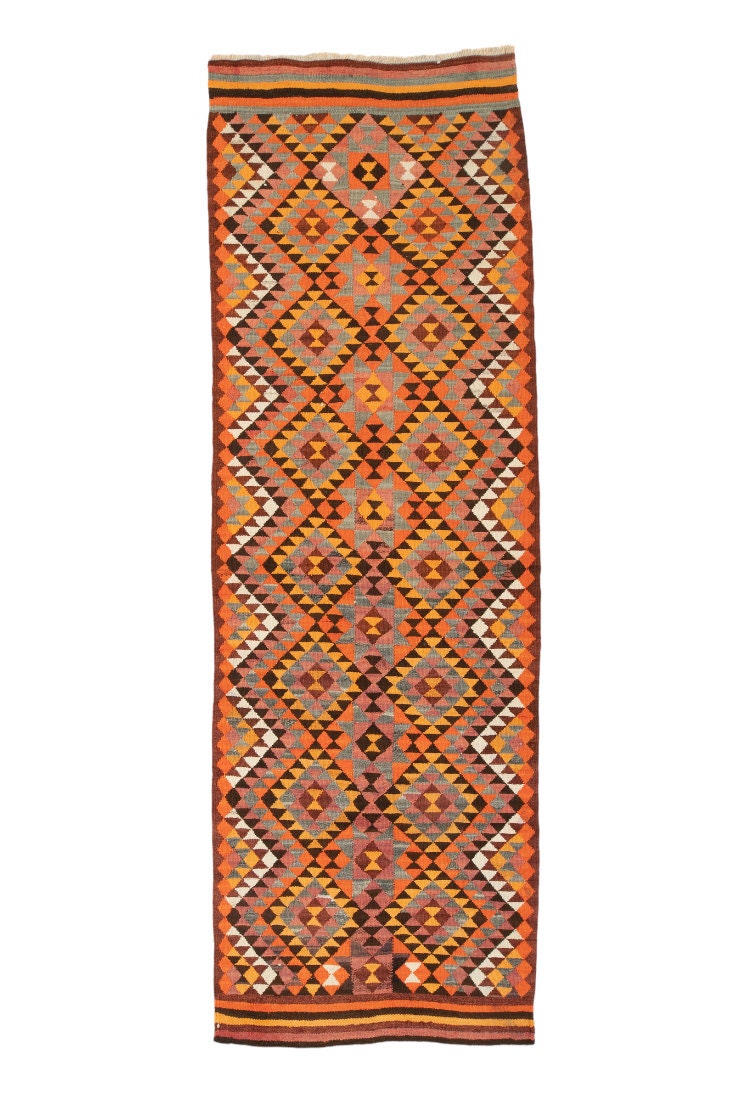
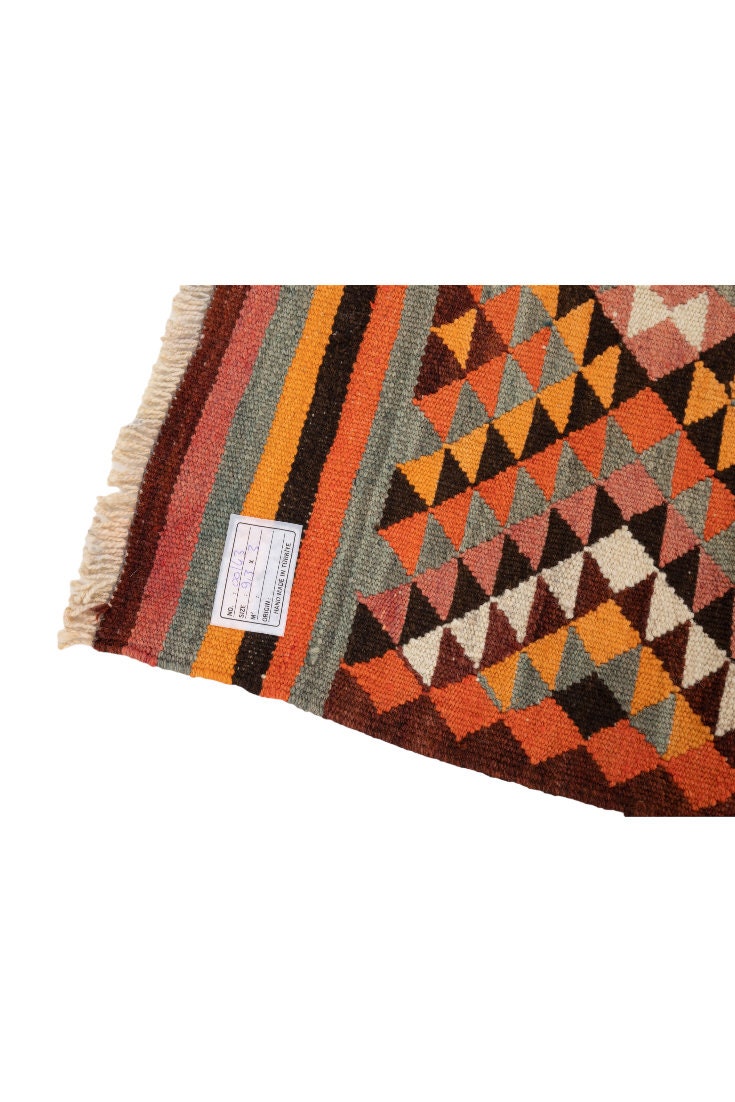
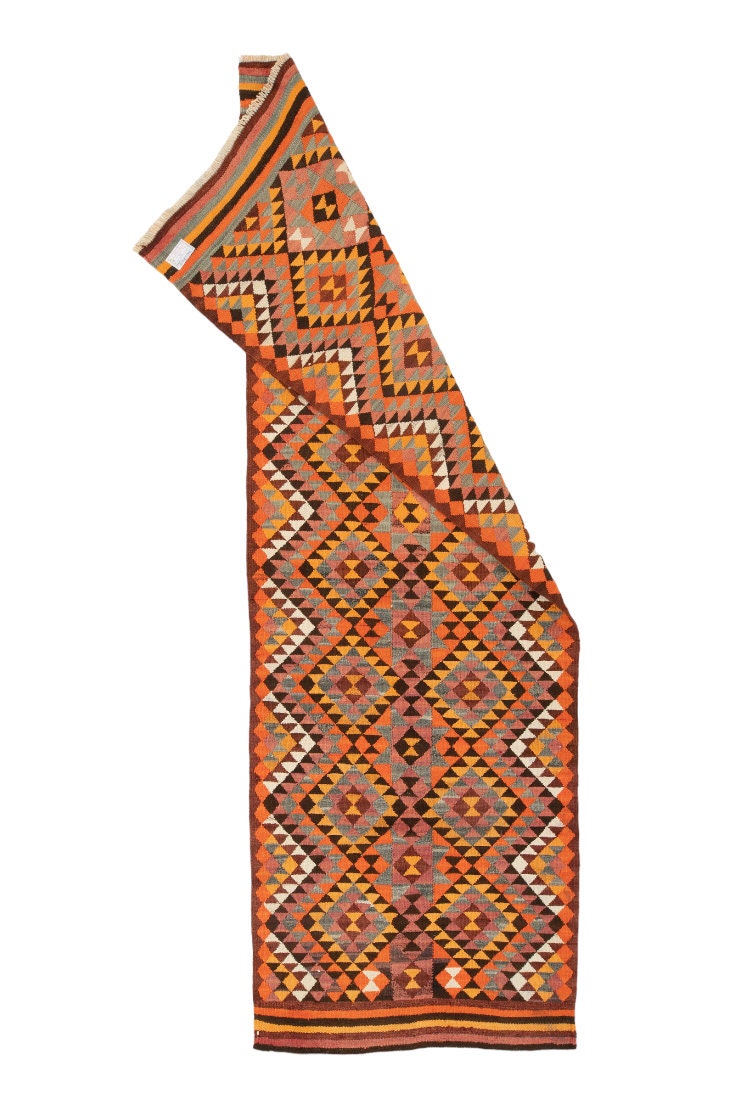

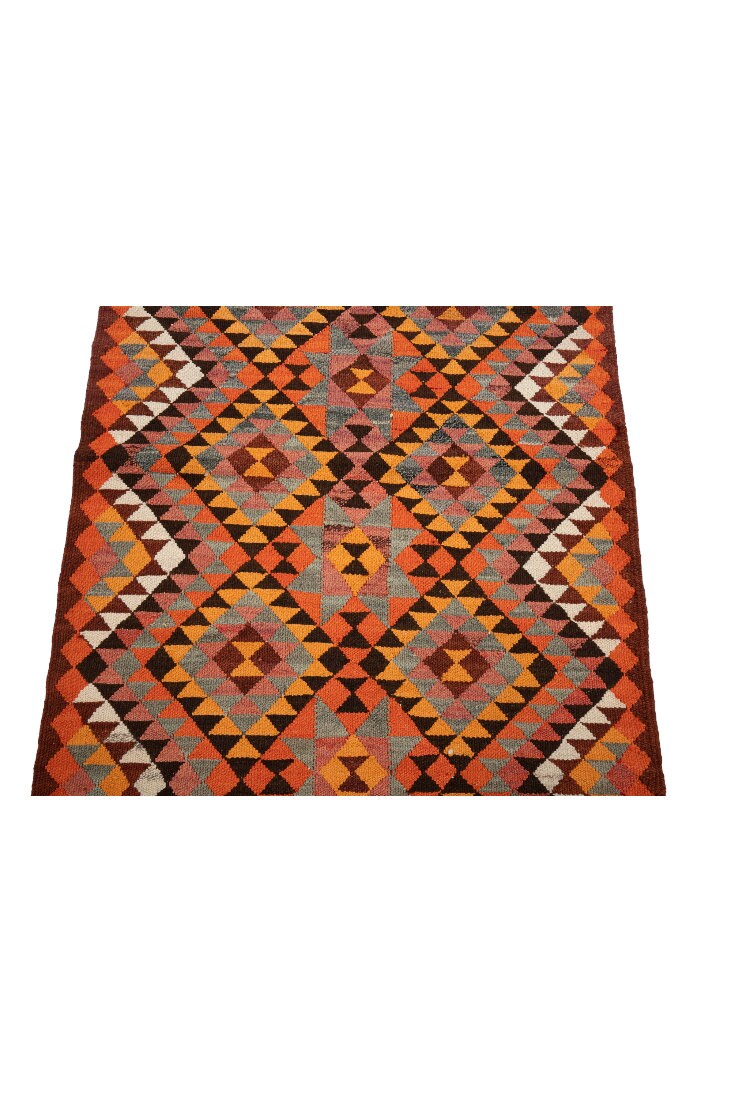
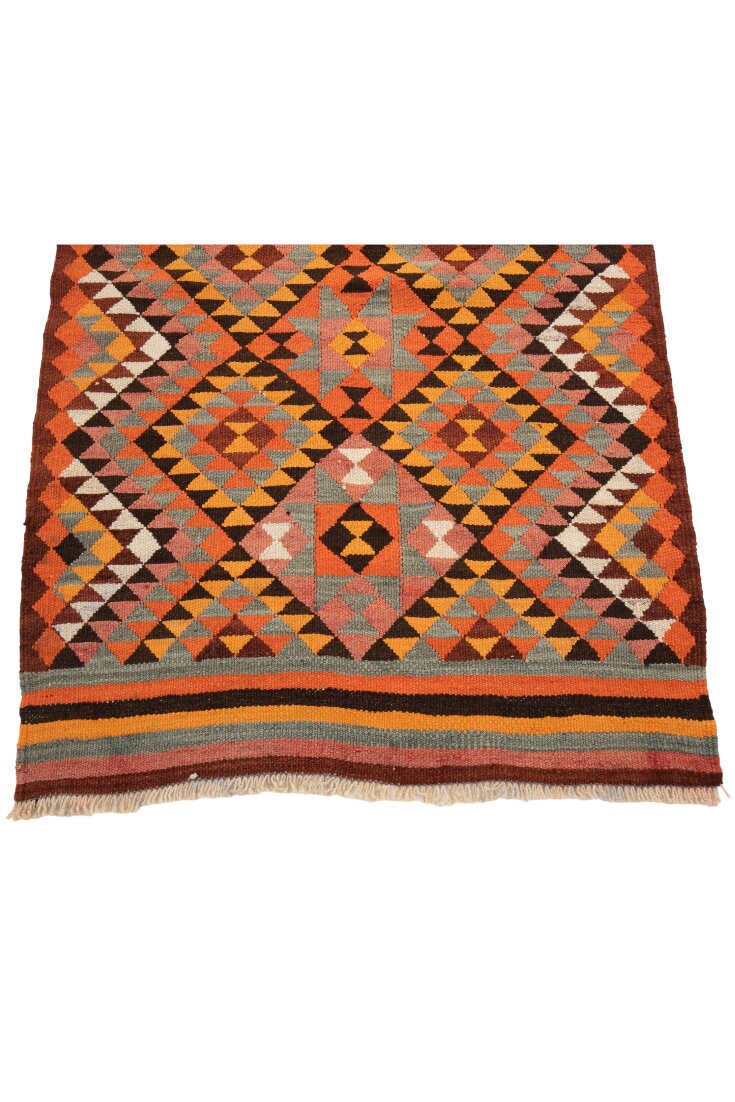
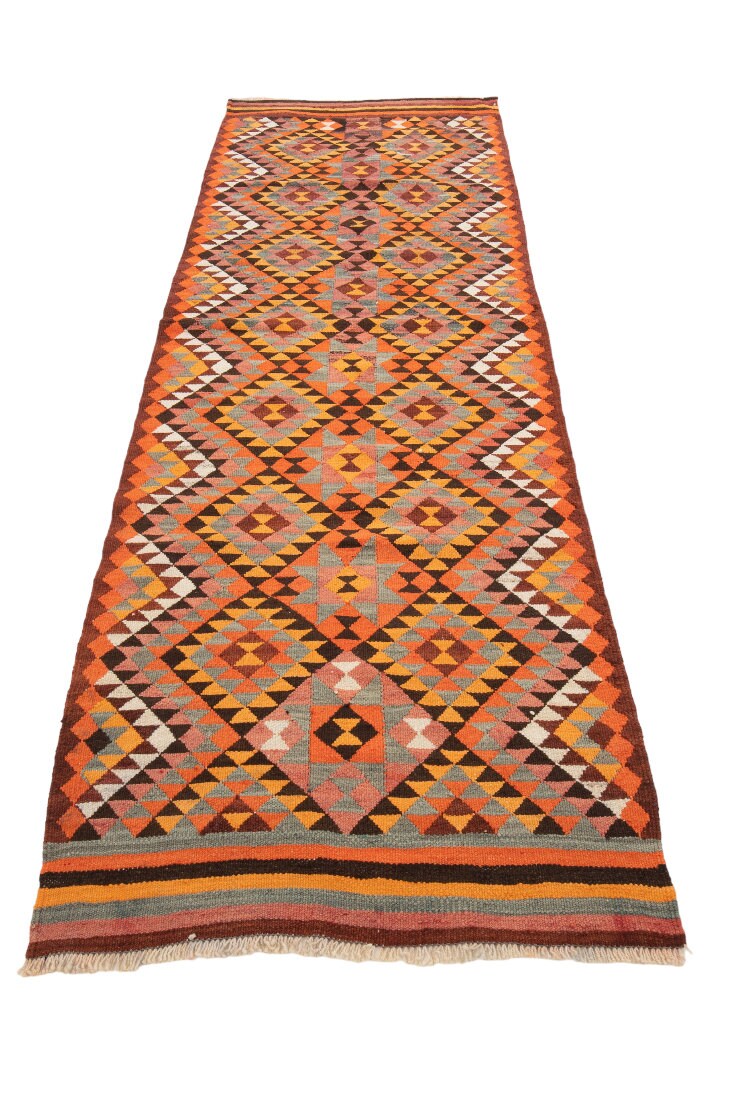
Turkish Kilim Runner
Description
Anatolian Kilims, also known as Anatolian Flatweaves or Anatolian Rugs, are traditional handwoven textiles originating from the Anatolian Peninsula in modern-day Turkey. Kilims are a type of flat tapestry-woven carpet or rug that have been produced for centuries by various tribal and village communities in the region. They are renowned for their intricate designs, , and cultural significance.
Here are some key features and aspects of Anatolian Kilims:
* Weaving Technique: Kilims are woven using a specific technique called "flatweave," where the weft threads are tightly interwoven with the warp threads, creating a flat surface without a pile. This gives kilims their characteristic thin and lightweight structure.
* Designs and Patterns: Anatolian Kilims are known for their diverse range of geometric patterns, motifs, and symbols. These designs often hold cultural, tribal, and regional significance, reflecting the history and heritage of the communities that create them.
* Materials: Traditional Anatolian Kilims are made from natural fibers such as wool, cotton, and occasionally silk. The use of natural materials contributes to their durability and distinct texture.
* Color Palette: The color palette of Anatolian Kilims is rich and vibrant, featuring bold and contrasting colors. These colors are often derived from natural dyes, which have been used for centuries to create these textiles.
* Cultural Significance: Kilims hold a special place in Anatolian culture, as they are not only functional textiles but also pieces of art that convey stories, traditions, and a sense of identity. They have been used as floor coverings, wall hangings, and even as camel bags by nomadic tribes.
* Regional Variations: Different regions within Anatolia have their own distinct styles of kilim weaving. These regional variations are often characterized by specific patterns, colors, and motifs that are unique to each area.
* Collectibility and Market: Anatolian Kilims have gained popularity among collectors and interior designers for their aesthetic appeal and historical value. Antique and well-preserved kilims are often considered valuable pieces of art and can command high prices in the market.
* Modern Interpretations: While traditional kilim weaving techniques are still practiced by artisans, contemporary designers have also incorporated kilim patterns and motifs into modern fashion and interior design, blending the old with the new.
Anatolian Kilims have a rich cultural heritage and are cherished not only for their artistic beauty but also for their role in preserving the traditions and stories of the Anatolian people.
Here are some key features and aspects of Anatolian Kilims:
* Weaving Technique: Kilims are woven using a specific technique called "flatweave," where the weft threads are tightly interwoven with the warp threads, creating a flat surface without a pile. This gives kilims their characteristic thin and lightweight structure.
* Designs and Patterns: Anatolian Kilims are known for their diverse range of geometric patterns, motifs, and symbols. These designs often hold cultural, tribal, and regional significance, reflecting the history and heritage of the communities that create them.
* Materials: Traditional Anatolian Kilims are made from natural fibers such as wool, cotton, and occasionally silk. The use of natural materials contributes to their durability and distinct texture.
* Color Palette: The color palette of Anatolian Kilims is rich and vibrant, featuring bold and contrasting colors. These colors are often derived from natural dyes, which have been used for centuries to create these textiles.
* Cultural Significance: Kilims hold a special place in Anatolian culture, as they are not only functional textiles but also pieces of art that convey stories, traditions, and a sense of identity. They have been used as floor coverings, wall hangings, and even as camel bags by nomadic tribes.
* Regional Variations: Different regions within Anatolia have their own distinct styles of kilim weaving. These regional variations are often characterized by specific patterns, colors, and motifs that are unique to each area.
* Collectibility and Market: Anatolian Kilims have gained popularity among collectors and interior designers for their aesthetic appeal and historical value. Antique and well-preserved kilims are often considered valuable pieces of art and can command high prices in the market.
* Modern Interpretations: While traditional kilim weaving techniques are still practiced by artisans, contemporary designers have also incorporated kilim patterns and motifs into modern fashion and interior design, blending the old with the new.
Anatolian Kilims have a rich cultural heritage and are cherished not only for their artistic beauty but also for their role in preserving the traditions and stories of the Anatolian people.

Turkish Kilim Runner
Sale price$550.00
Regular price$0.00 (/)


